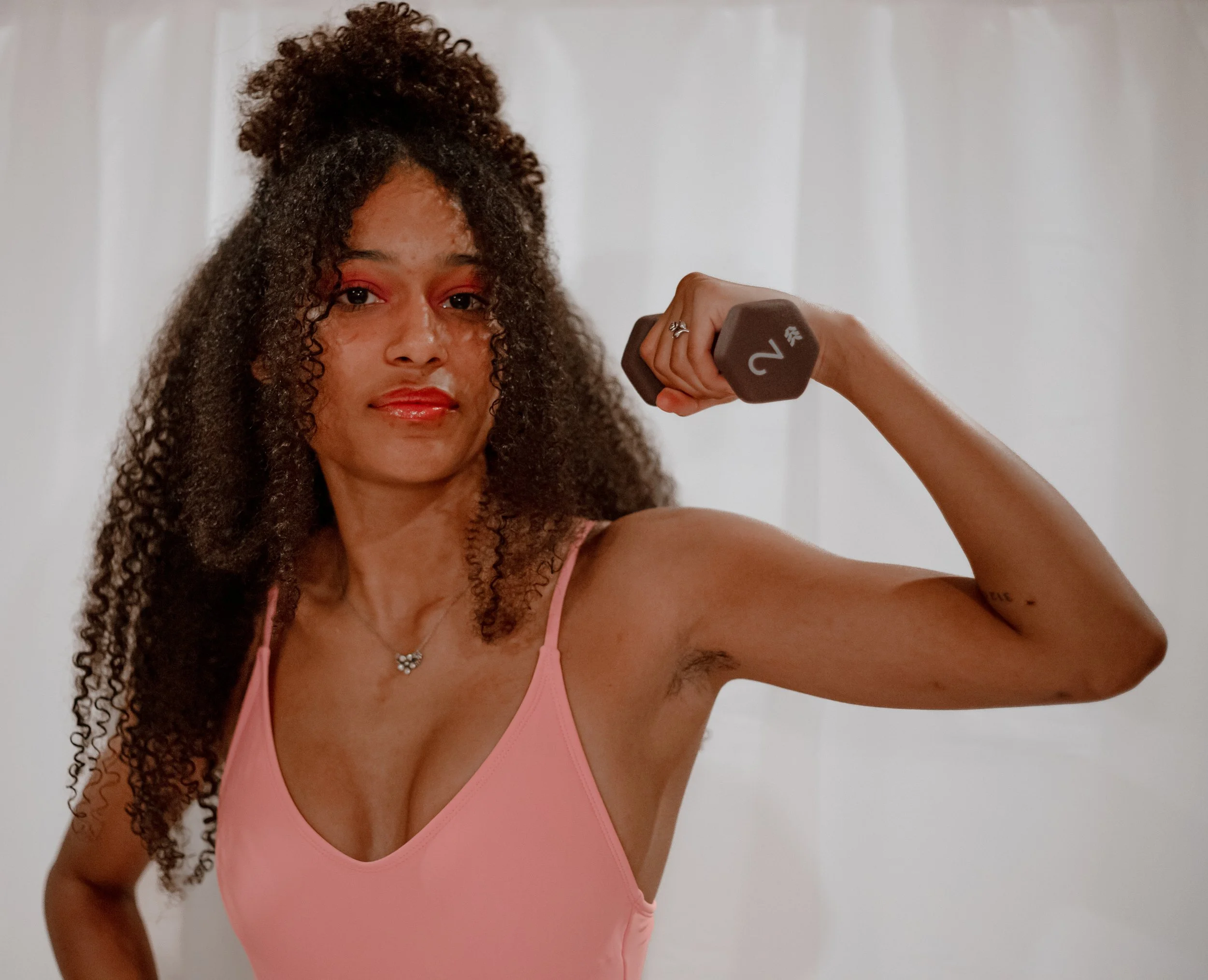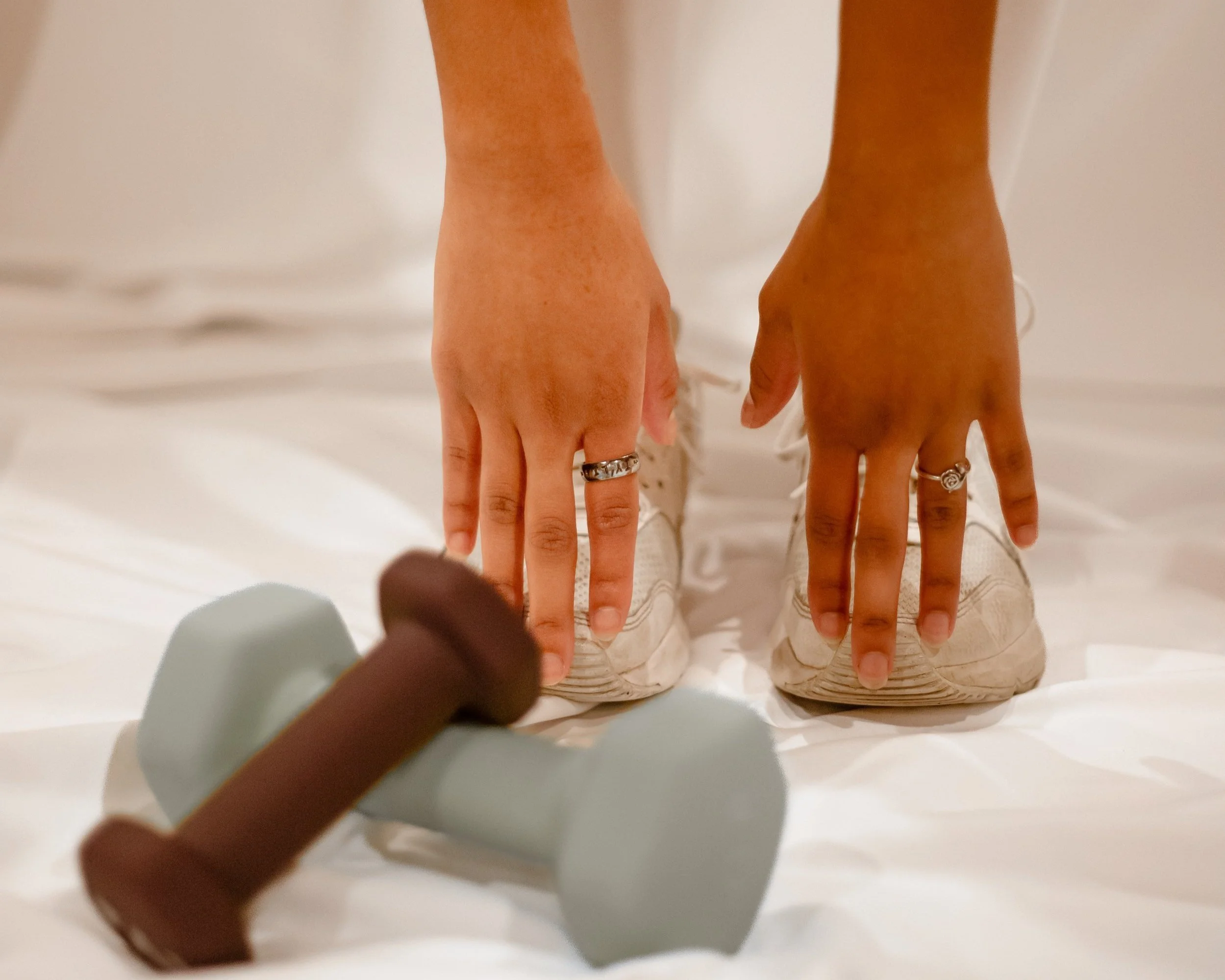History of Women's Fitness
Walking through any major city or college campus in the United States, it is easy to spot women sporting their new colorful athleisure sets left and right. Bold running shoes, like HOKAs, are paired with biker shorts and Owala water bottles to show off the ultimate dedication of fitness in daily life. How did the fashion of fitness evolve into such a large chunk of a woman’s livelihood today? To unravel this phenomenon, let’s start at the very beginning.
For the sake of this article, I will use the definition of “workout: a practice or exercise to test or improve one’s fitness for athletic competition, ability, or performance” as defined by the Merriam Webster dictionary. This will not include dances nor daily life activities, although these activities require a similar set of strength, balance and coordination by women.
1970s
A mere two years before the decade began, the New York Times ran a piece making fun of the idea of jogging, but the same activity that was once cause for a neighbor to call the police turned into an activity many Americans enjoyed. The running boom happened to coincide with the women’s rights movement of the seventies, paving the way for the invention of the sports bra. Lisa Lendahl and Polly Smith would put an end to the pain that jogging brought with the unsupportive lingerie bras traditionally worn. The result? Jogbras were born and shipped across stores nationwide. With better support for high intensity workouts, women were able to comfortably break further into the fitness world that was previously ruled by men.
Before, low-impact, no-sweat workouts were acceptable in the proper attire of dresses. Tennis, badminton or roller-skating were all fine hobbies to take up for a woman, but any sight of sweat was reserved for private workouts in order to maintain the facade of a Hollywood physique that was effortlessly thin. After the passing of Title IX in 1972, women’s sports launched into a new world. Young girls had more opportunities to join sports teams in school as a new era of rights for women emerged. No longer restricted to dainty, ladylike sports such as croquet, women’s fitness was on its way to sweat.
Then came Jazzercise. Judi Sheppard Millet’s invention of dance for all body types would be the stepping stone for modern workout classes today, with live instructors and music. The emphasis on dance encouraged tights and leotards that would roll over into the next decade.
1980s
Jane Fonda’s Workout was all the craze after her first VHS tape hit stores in 1982. High cut leotards, colored tights, leg warmers, voluminous hair and the bright makeup the eighties would be known for were all elements Jane Fonda utilized to set fitness in a whole new direction for women. A new type of femininity quickly emerged through the high-intensity aerobics that, with home video, became increasingly more accessible for women.
Following the beginning of the aerobics craze, Time published their “New Ideal of Beauty” issue that same year. From afar, this was groundbreaking in the expectation of femininity. Women were given more grace to become muscular because of the new health-based perspective. A toned stomach and arms paired with strong thighs while still maintaining the softer shapes of a woman was marketed as an attainable shape for any woman, as long as they had the motivation and endurance to create this body for themselves. Yet, as Time stated, “a woman who is more aware of her physicality will probably be more aware of her sexuality.” Even in the years where women found themselves more and more encouraged to take on weights and high-cardio, the beauty industry emphasized that the end goal is for a woman’s own sex appeal. The new woman wanted to be healthy because healthy is thin and thin is attractive. Filled throughout the pages are the measurements of the fitness celebrities themselves with quotes from “experts” (often magazine editors) who give their own opinion on the new ideal body shape of the 80s. Although women could find strength from their workout, the underlying point still remained that there was a strict guideline for feminine beauty that must be followed, even while working out.
1990s
Post-eighties, women’s fitness became a subculture of American women. Steadily rising as a brand, the marketing shifted to a lifestyle that needed to be sold. Even as the ideal body shifted once again to focus on a thin body with minimal muscle, the idea that this perfect body could be reached by anyone was still shouted by magazines. In 1992, David Barton would open his first gym that would set fitness into a whole new era. The nightclub inspired room blasted music and projected colorful lights across the room while people
Following the late eighties, matching bright and loose jogger sets continued to steadily rise in popularity through the early nineties. The goal was that the warmth would cause more sweat, thus allowing the person to lose weight quicker. Then with the popularity of step aerobics and spinning (stationary cycling), biker shorts and tight-fitted tops developed to adjust to the cardio requirements and show off the slim figure that was envied. During the mid-90s, Princess Diana famously fashioned biker shorts with crew necks and tall socks, marking a new era of women’s athleisure making its way into the general day-to-day lifestyle.
2000s
Say hello to spirituality in fitness. Yoga found its commercialization in Western culture and would combine with the ever-popular kick-boxing and Zumba to create subsets of the traditional practice. Supposedly focusing on the connection of mind and body, the fashion took mainstream with tank tops and yoga pants. Sported by women of all ages, there began a shift into a normalization of workout clothes into the day-to-day life partially thanks to the flared leggings that were worn outside of the yoga studio.
2010s
The concept of boutique fitness gyms was ingrained in the American mind by this point. From Barry’s Bootcamp opening in 1998 and SoulCycle in 2006, women were sweating (in public too).
While there had been fitness celebrities for the past few decades targeting women to buy unnecessary supplements and workout gear, social media introduced the fitness influencer. With this, women are exposed to even more opinions on the best way to fit in at overpriced celebrity boutique gyms. Gradually throughout the decade, the fashion that women worked out in became less about its functionality because it was already a given. With comfort in mind, leggings were truly the defining moment of the decade, and even found their way into mainstream fashion after branching out from the gym. Easy to style and easy to wear, a simple black style was a closet staple and a quirky pattern was definitely encouraged.
Although athleisure brought a relaxed feeling to life, the increase in social media use and an in-person class membership meant that the pressure of wearing a trendy outfit was simply more known. Women's exposure to society when working out had sky-rocketed from an at-home VHS tape to a highly publicized community event for a monthly fee. If the comparison to the people in class wasn’t enough, scrolling online seeing fitness micro-influencers get paid to hype up a new brand that guarantees the hottest new look is bound to force almost any woman to become self-aware of their image even as they try to workout. Despite the body positivity of the 2010s, gym culture was becoming a toxic environment if not careful.
Today
Reformer pilates studios have easily made their mark in women’s fitness. Averaging about $200-$300 per month, it’s not just a class, it’s a whole culture. People don’t pay for the workout alone, they are paying for the experience. Sleek matching sets of leggings and sports bras in muted colors, such as lavender and sage, have quickly become the norm. When a woman walks into the room, she’s greeted by other women who will shower her with compliments based on both her outfit and skill. It may not be the sex appeal that leotards brought out in the 80s, but the social validation still persists with women’s fashion even in the gym today.
Slick back hairstyles are all the rage thanks to the fact that they hide greasy and oily hair that is often attributed to sweating during workouts but opting to wash the hair on a strict schedule that usually alternates days. Chunky shoes that are cushioned are also seeing their moment of fame right now just as long-distance running is taking off as a hobby.
The transformation of women’s health into the marketed white upper middle class lifestyle is partially due to the fashion that brought women into the “in-circle.” The evolution of fashion coexists with the growth of a fitness business world. Healthy women are the twenty-first century concept that sells. Between their own social media and the community, that may vary from gym to boutique to informal clubs, what women wear is just as important as it ever was. As a society, the U.S. may have moved away from dresses and leotards, but the expectation to arrive and leave put together with matching sets and water bottles leaves little room for individuality.
By intertwining women’s health, fitness and fashion, are the requirements of womanhood just a new look compared to what it was fifty years ago? Perhaps the expectation of a woman’s body is warped between the social media influencer’s edited and posed body online and the overall expectation of working out everyday. The focus must stray away from the lifestyle of health that is packaged up with a bow and sold for hundreds of dollars between memberships and fast-fashion brands; rather, a true emphasis on the peace, happiness and health that the movement of our bodies bring.
Written by Thea Findlay, Photography: Kaleigh Mazy, Design: Sydney Gorski, Social Media: Clara Valkoun, Styling: Avery Elkins


